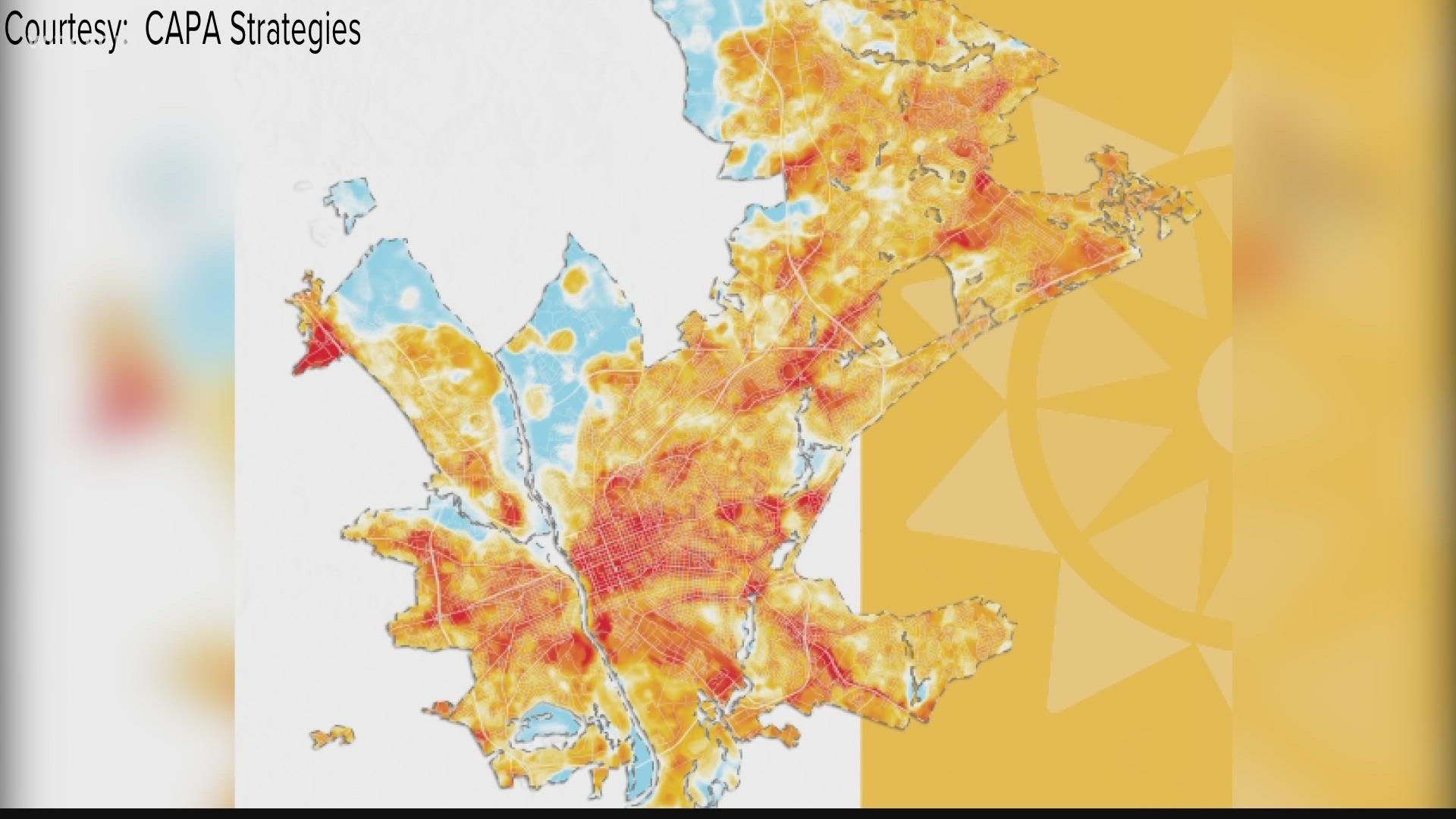COLUMBIA, S.C. — Columbia is known for its summer heat.
For the last three months, scientists have been going through data they collected through a study to find out what the warmest parts of the city are, and the results are in.
"We knew the city is a little bit warmer than the countryside, but we found it was a good deal warmer," says Kristin Dow, professor of geology at the University of South Carolina.
Dow lead the initiative back in August when drivers headed out three times a day, morning, noon, and night and the differences were significant between urban and rural areas - by as much as 18.5 degrees at the same time of day.
"The National Weather Service station said it was 93 max that day. The equipment we had shows it got up to 100 degrees in different parts of the city," Dow said. "The hottest parts of the city were places we had the most asphalt and the most buildings collecting up that solar radiation. When you look at the map, you'll see the commercial corridors laid out, big wide streets appear, the density of buildings downtown."
Some in the community said they were not surprised by the findings.
"I am not shocked by results," resident Chris Cooke said. "I've lived here all of my life. It's one of the hottest cities in South Carolina."
Others said they weren't surprised because of the number of buildings and windows that lack shade.
Now that the research is done, Dow is hopeful things will change.
"While the city is doing tree planting, 500 a year, I think there is an opportunity here to do more," she said.
The City of Columbia Public Works Office said they plan to overlay the maps from the study with their own mapping system to see where they can plant trees.
The report also added that this data could be used to apply for federal dollars earmarked for climate resilience projects for tree planting.

